

Shane O'Donoghue
2026 Nissan Leaf review: Quick drive
5 Days Ago

Publisher
To the average person, every Ferrari is a supercar, but to the company itself, the word ‘supercar’ is reserved for those very special, limited-numbered cars that are released to the world every decade or so.
What Ferrari constitutes as a supercar is what most now refer to as a hypercar. To understand the importance of the Italian brand’s latest creation, the Ferrari F80, then we must first have a brief look at what came before:
From the original 288 GTO to the LaFerrari, these halo cars are what define the Italian brand and set its vision and tone for the models that follow. As such, the all-new Ferrari F80 is the most essential vehicle to leave Maranello since production of the LaFerrari Aperta ended in 2018.
100s of new car deals are available through CarExpert right now. Get the experts on your side and score a great deal. Browse now.
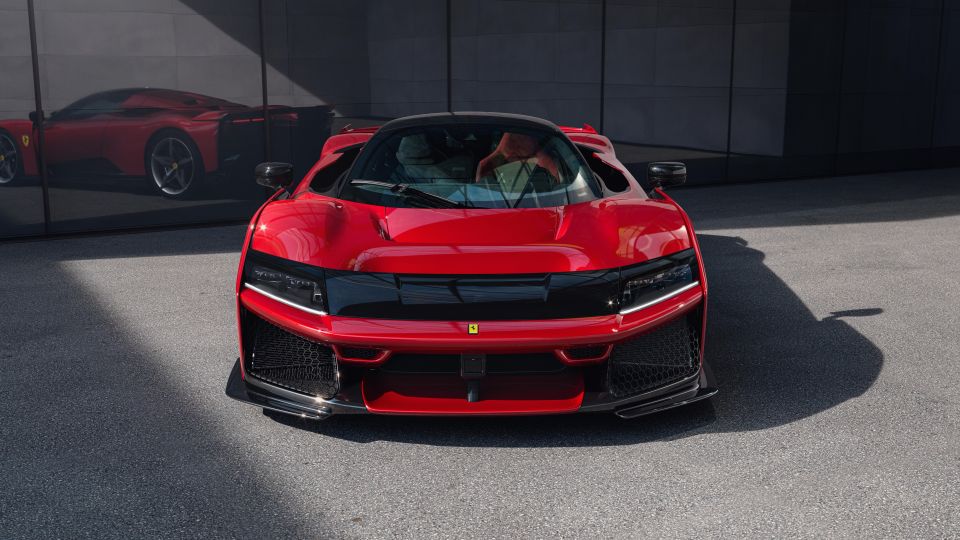
| Specifications | Ferrari F80 |
|---|---|
| Engine | 3.0-litre twin-turbocharged V6 engine with electric motor |
| Engine outputs | 662kW/850Nm |
| Electric motor outputs | 220kW/242Nm** |
| System outputs | 882.35kW/1100Nm+ |
| Battery | 2.28kWh battery |
| Transmission | 8-speed dual-clutch F1 DCT |
| Driven wheels | AWD |
| Weight | 1525kg dry weight |
| Maximum speed | 350km/h |
| 0–100 km/h | 2.15 seconds |
| 0–200 km/h | 5.75 seconds |
| 100-0 km/h | 28m |
| 200-0 km/h | 98m |
| Fuel economy (claimed) | TBC |
| Electric driving range (PHEV) | 0km |
| CO2 emissions | TBC |
Read the full technical breakdown of the Ferrari F80.
At first glance, it’s a big departure from what came before. Gone is the V12, and in its place is an electrified twin-turbo V6 with an incredible 1200hp (882kW) on tap.
This is the quickest, fastest and most powerful road-legal Ferrari ever, able to go from 0-100km/h in 2.15 seconds, hit 200km/h in 5.75 seconds and reach a limited top speed of 350km/h.

Limited to just 799 examples – which, as you can guess, have all already been sold – it should come as no surprise that this is also the most expensive of the ‘supercar’ models ever on sale.
In Europe, the vehicle is priced at €2.9 million Euro (as a comparison, the LaFerrari was priced at €1.2m Euro), which equates to roughly A$4.7m, but to get an actual price we must add the Luxury Car Tax (LCT), which will make it around $6.25m. This still excludes stamp duty (close to $600,000 in some Australian states) and other on-road costs.
So it’s very much the case that the Ferrari F80 will cost around A$7,000,000 before any customisation requests, which we suspect will be plentiful.
There is no doubt that the very lucky and very, very few Australian customers that have been offered an allocation will have their vehicle specified in a manner that will see it go well past $8,000,000 when the first F80 deliveries take place toward the end of 2025 – all of which will be left-hand drive only.

All the facts and figures aside, how did the Ferrari F80 come to be? Why is it a hybrid? What other options were considered? Where is the V12? And how will Ferrari keep its electrified powertrain working indefinitely?
To find out the answers to all these questions, we came to Ferrari’s home at Maranello, where astute Ferrari staff taped up our phones, confiscated our laptops and iPads, and all but conducted a body cavity search before allowing us to enter the company’s new E-Building for the F80’s unveiling.
It’s fair to say there is less security at a Trump rally than what Ferrari enforced here.

There is no doubt the Italians know how to put on a show, and the F80 event was unlike any other we’ve ever attended. In addition to the security requirements, we were led through a countless number of well-presented stages and rooms that built up what came before the F80’s public debut.
The company’s top brass rolled out a magnificent presentation showcasing why the car exists and how it came to be the pinnacle of Ferrari for the next decade.
At one stage, an automated robot even paraded around an F80 chassis in the middle of the presentation. Showmanship is clearly an Italian hallmark.
Enrico Galliera, Ferrari’s chief marketing and commercial officer, gave a very frank assessment of how and why the F80 came to be. According to him, Ferrari was presented with four fundamental questions.
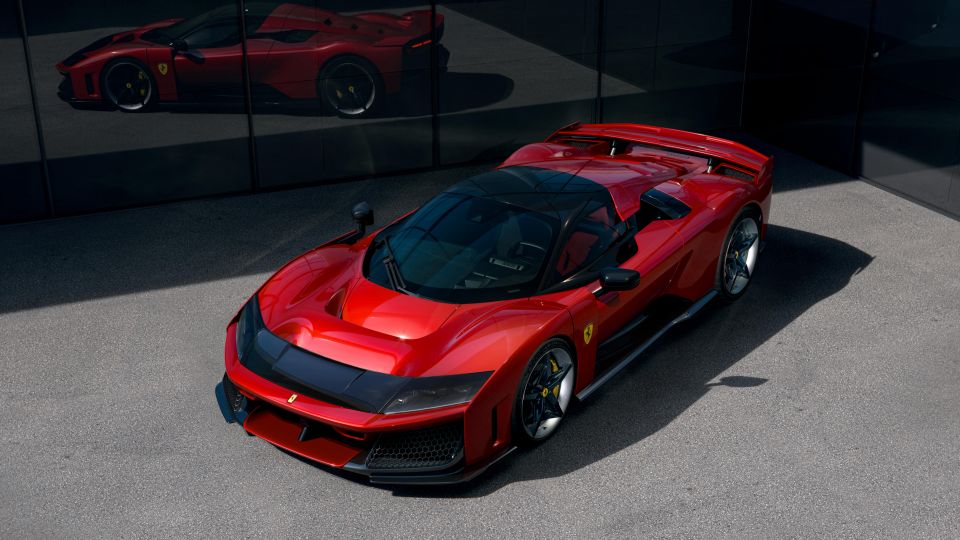
Firstly, the question of whether the F80 even needed to be road-legal was hotly contested internally.
“Should it be a relentless, uncompromising track beast, or an extreme machine that’s also enjoyable and usable on normal roads?” Mr Galliera told the small contingent of international media.
Ferrari already builds plenty of track-only specials for its most important customers, so this is not a new idea. These cars are kept as an arrive-and-drive program that many owners enjoy throughout the year.
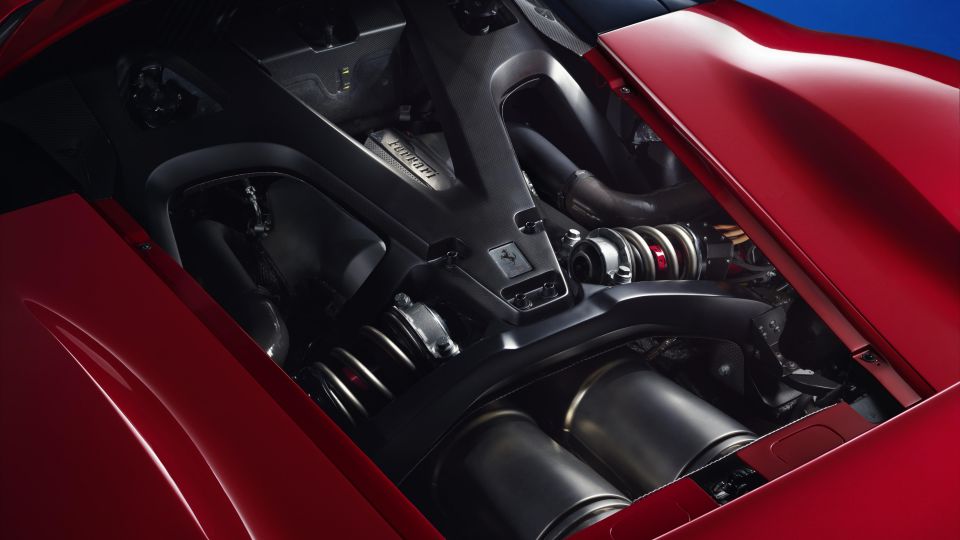
With the F80, however, Ferrari wanted to ensure that these cars were seen on the road and driven regularly.
“Our philosophy is that even the most extreme and special cars have to be experienced to the fullest, even beyond the racetrack, and not only be kept in the garage.”
This of course presented an incredibly long list of engineering challenges, for creating a modern hypercar that meets safety and environmental regulations while having such outstanding performance figures is no easy feat.
Mr Galliera admitted the second question led to even more internal arguments.
“Should we do a single-seater, just for the driver? Or a two-seater for a shared experience?”
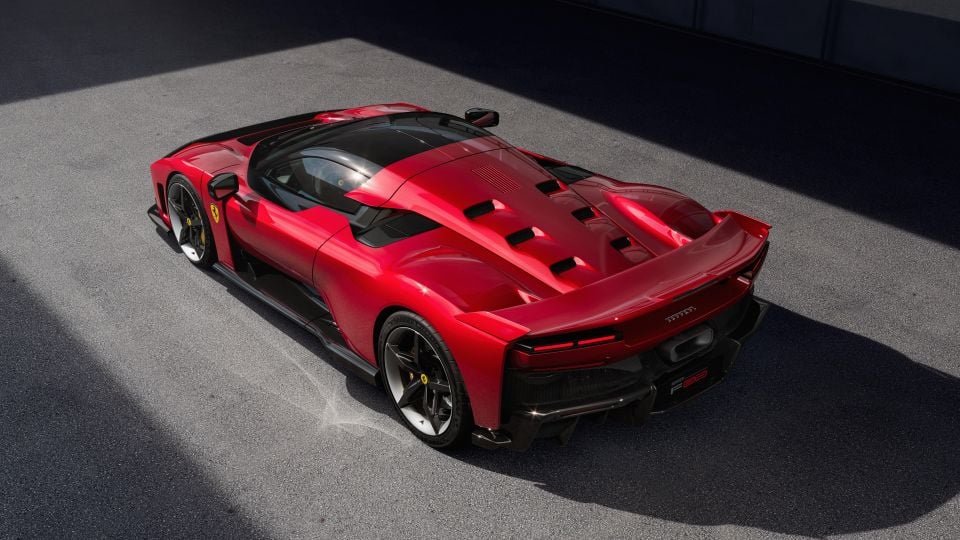
In order to qualify to buy an F80, one must already have a huge collection of Ferraris (and be well-regarded by the company), so creating a single-seater is never about practicality but the desire of its customers.
“A single-seater would allow us to have a smaller cabin area, improving the aerodynamics and the weight of the car [like in F1]. Yet, the joy of shared exhilaration was equally compelling.”
Looking at the photos of the F80 here, you may be fooled into thinking this is a two-seater hypercar, but that’s not the case. Ferrari’s answer to the single versus two-seater question was to meet in the middle.
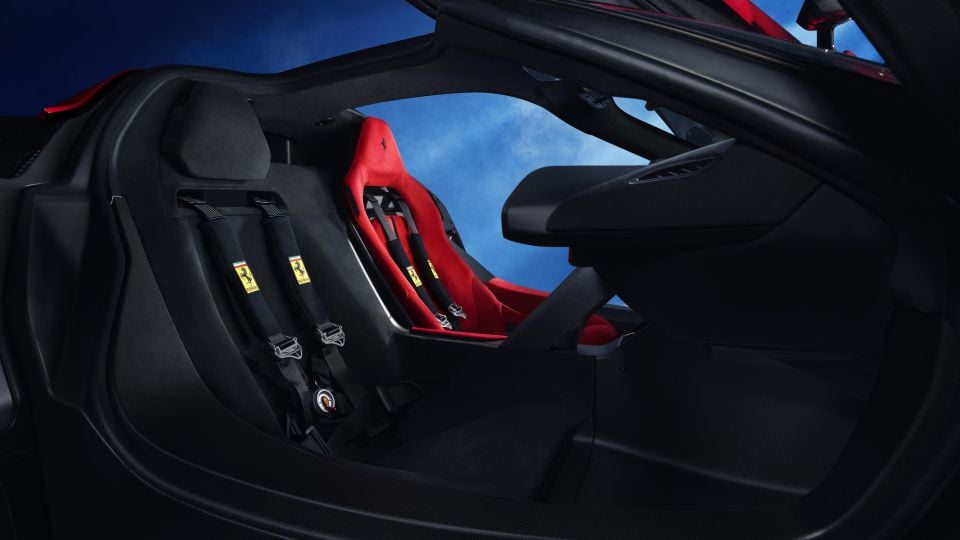
Ferrari built an incredible cabin, seat and driving experience for the driver and then, seemingly, put a cushion on the chassis for the passenger.
Having sat in the passenger cushion (seat is too generous a word), we can assure you it’s almost created with disdain, but at least it exists. Feedback from Ferrari owners has been relatively positive, Mr Galliera says, with some commenting that “at least you can’t see the passenger scream”.
Ferrari has come up with the term “two-seat single-seater”, which we would probably rather refer to as a 1.5-seater. In some respects, if your passenger doesn’t fit in the passenger seat of your F80, you probably need to upgrade your passenger.
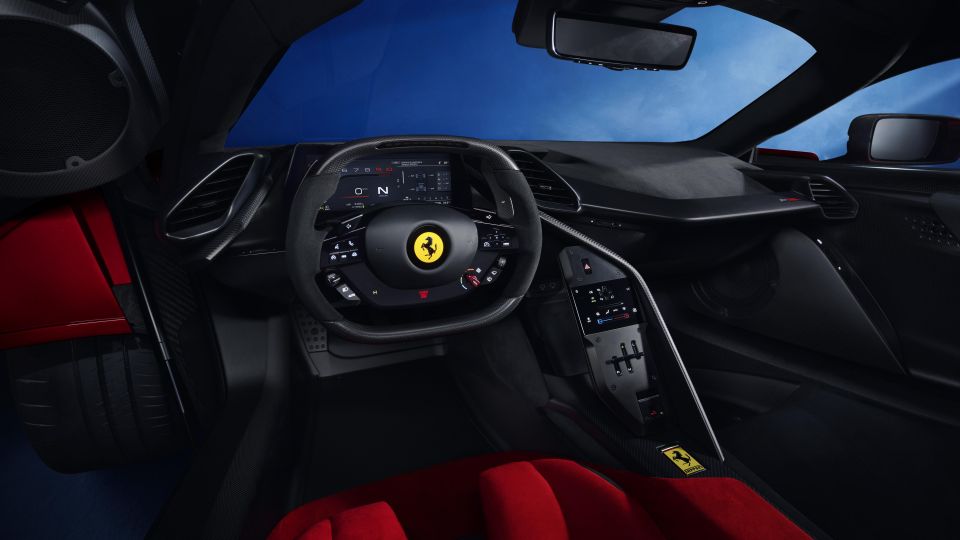
The third question was a more philosophical one. Those who know Ferrari’s history know that it started out essentially as a racing company that built road cars to pay the bills.
The world is different now, but its connection to the Scuderia Ferrari F1 team – based just around the corner – is still undoubtedly at its core.
“What other superior technical and structural solutions can we import from our racing world to a street-legal car?” asks Mr Galliera.
Indeed, the F80 contains a lot of F1 technology. Like the F40 and F50 at the time, the F80 is an interpretation of a current Formula 1 car you can drive to Coles.
From 3D metal printing for structural pieces to the Ferrari-made battery used in the vehicle (which is almost identical in compound to the one in the brand’s F1 car), the F80 sets the tone for what we should expect to see in future Ferrari models in terms of weight-saving technology and performance electrification.
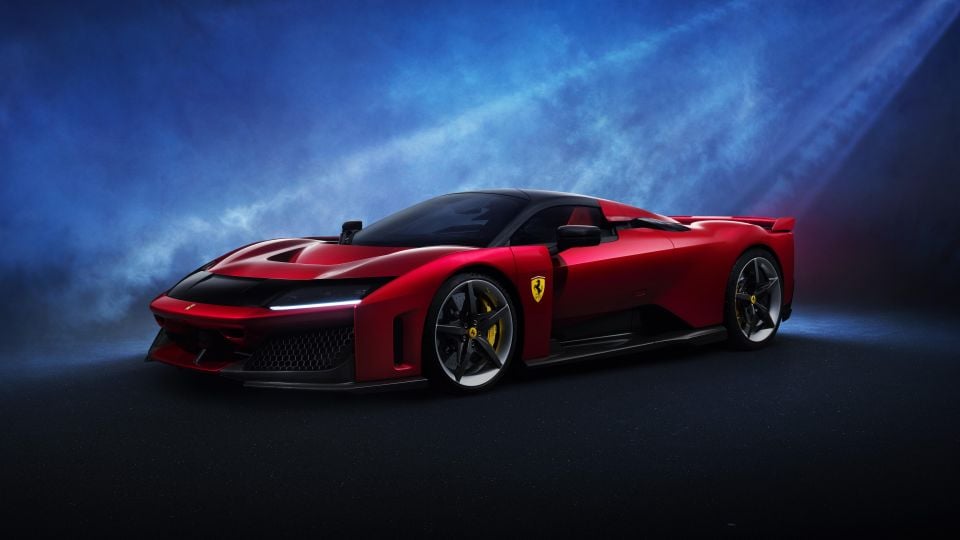
Adding additional features like the tri-plane front wing, 3D-engineered underbody, and active rear wing results in an incredible new downforce benchmark of 1050 kilograms at 250km/h.
Perhaps the most important question that faced Ferrari in the F80’s development was the powertrain. The engine. As Enzo Ferrari once said, with a Ferrari you buy the engine and the car comes for free. So why a V6?
“Is it better to go for the historically most iconic Ferrari engine, the V12, or the best architecture now used in top-level racing?”
There is no doubt that plenty of Ferrari purists and even those inside the company would have loved to see yet another V12 Ferrari.
In fact, when the company’s SUV is powered by a V12 and the new 12Cilindri is still a naturally aspirated V12, there is no denying that Ferrari remains a V12 company.
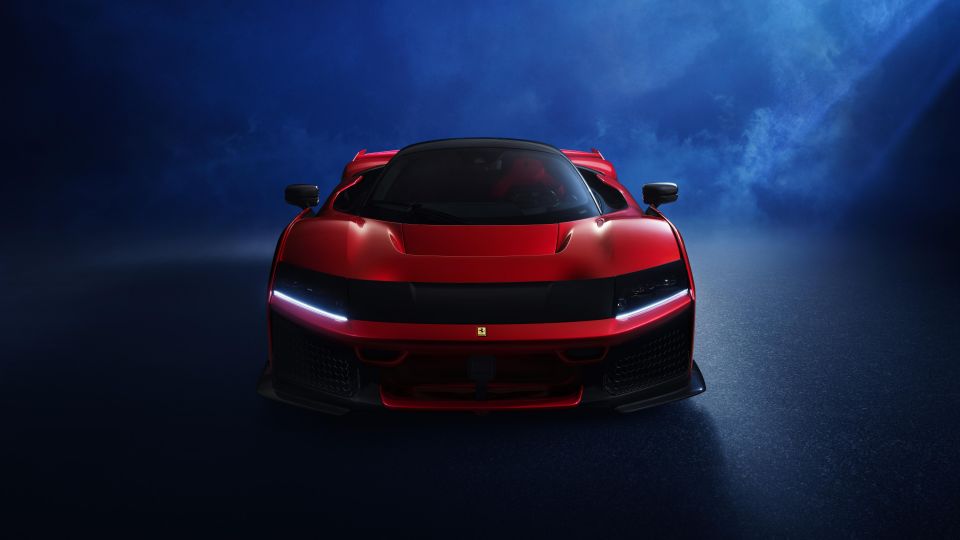
As such, the decision to choose a turbocharged V6 hybrid powertrain over a naturally aspirated V12 is not about emissions, but performance.
“The answer was kind of easy,” Mr Galliera said.
“We always adopt the best technology for the engine. In the ’80s it was the V8 turbo, in the ’90s and up to now the naturally aspirated V12. Today, the pinnacle is our superb V6 turbo, a proven champion, having secured two victories in a row at Le Mans with the 499P.
“A powertrain that now soars to new heights when paired with our groundbreaking e-turbo.
“This revolutionary combination unleashes an unprecedented level of power, shattering records with an astonishing specific output of 300hp per litre. The result is a monumental leap forward, a new record for a Ferrari and for a road car.”
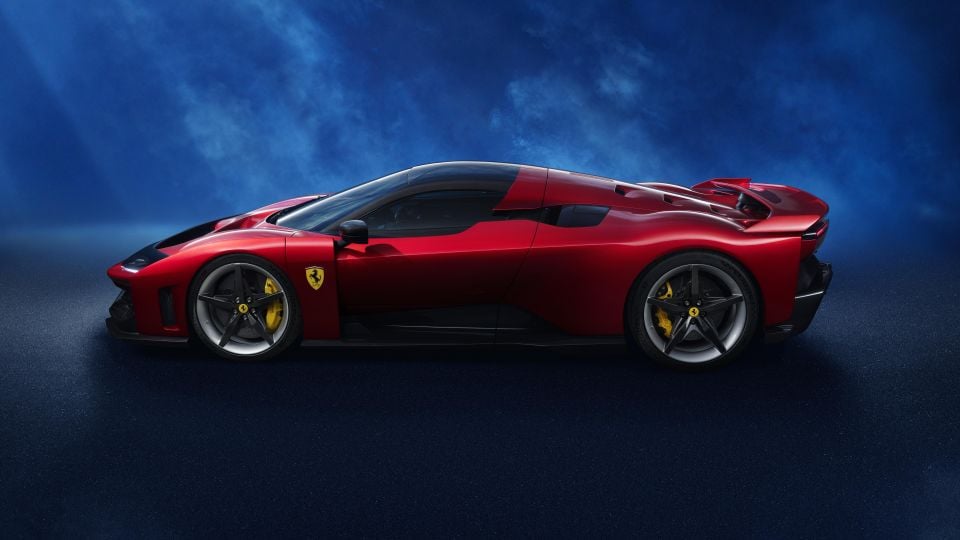
Ferrari gave us a quick demonstration of the new F80’s engine and exhaust note. While it’s not a high-revving V12, it was surprisingly high-pitched and loud. We will wait and see when the car goes on sale if it delivers the euphoric acoustic experience of Ferrari supercars of the past.
Ultimately, the new Ferrari F80 has reset the benchmark for what is possible in terms of power and performance. It’s the answer to a question nobody has asked, but that is why Ferrari exists. The company pushes the boundaries in every respect and continues to drag the rest of the automotive industry along for the drive.
While the 288, F40, F50, Enzo, and LaFerrari were the poster cars for many in the years gone by, the F80 will not only please current Ferrari buyers (an undisputed fact, given that all F80s are sold and many customers are screaming about missing out) but will also create an entirely new generation of fans who aspire to Ferrari ownership for decades to come.
| Maximum engine speed | 9000rpm (dynamic limiter at 9200rpm) |
|---|---|
| Compression ratio | 9.5:1 |
| REAR ELECTRIC MOTOR (MGU-K) | |
| Operating voltage | 650-860V |
| Peak power Regenerative braking: | 70kW (95cv); ICE assist: 60kW (81cv) |
| Peak torque | 45Nm |
| Maximum engine speed | 30,000rpm |
| Weight | 8.8kg |
| FRONT ELECTRIC MOTOR | |
| Operating voltage | 650-860 V |
| Peak power | 105kW (142cv) for each of the two electric motors |
| Peak torque | 121Nm |
| Maximum engine speed | 30,000rpm |
| Weight | 12.9kg |
| HIGH-VOLTAGE BATTERY | |
| Maximum voltage | 860V |
| Maximum power (charge/discharge) | 242kW |
| Energy | 2.28kWh |
| Maximum current | 350A |
| Power density | 6.16kW/kg |
| Weight | 39.3 kg |
| Length | 4840mm |
|---|---|
| Width | 2060mm |
| Height (in kerb weight conditions) | 1138mm |
| Wheelbase | 2665mm |
| Front track | 1701mm |
| Rear track | 1660mm |
| Dry weight 1525 kg | 1525kg |
| Weight distribution | 42.2% front / 57.8% rear |
| Fuel tank capacity | 63.5 litres |
| Luggage compartment capacity (behind the two seats) | 35 litres |
| Front | 285/30 R20 |
|---|---|
| Rear | 345/30 R21 |
| Front | 408 x 220 x 38 mm (6 pistons per calliper) |
| Rear | 390 x 263 x 32 mm (4 pistons per calliper) |
MORE: Everything Ferrari MORE: Ferrari F80: Why 799 are being made? MORE: Ferrari F80: 1200hp V6 hybrid and technical details explained MORE: ‘Ferrari is forever’: Maintaining electrified supercars indefinitely
Where expert car reviews meet expert car buying – CarExpert gives you trusted advice, personalised service and real savings on your next new car.
Alborz is the founder of CarAdvice (sold to Nine and now Drive) and co-founder of CarExpert. He is an honourary adjunct professor & entrepreneur in residence at the University of QLD. He loves naturally-aspirated V8s, V10s and V12s and is in denial about the impending death of the internal combustion engine. The best way to reach him is via Instagram.


Shane O'Donoghue
5 Days Ago


Matt Campbell
4 Days Ago


James Wong
3 Days Ago


CarExpert.com.au
2 Days Ago
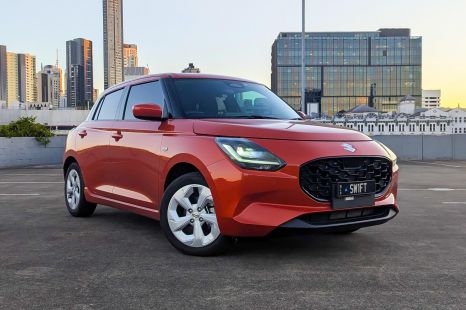

William Stopford
2 Days Ago


Max Davies
17 Hours Ago